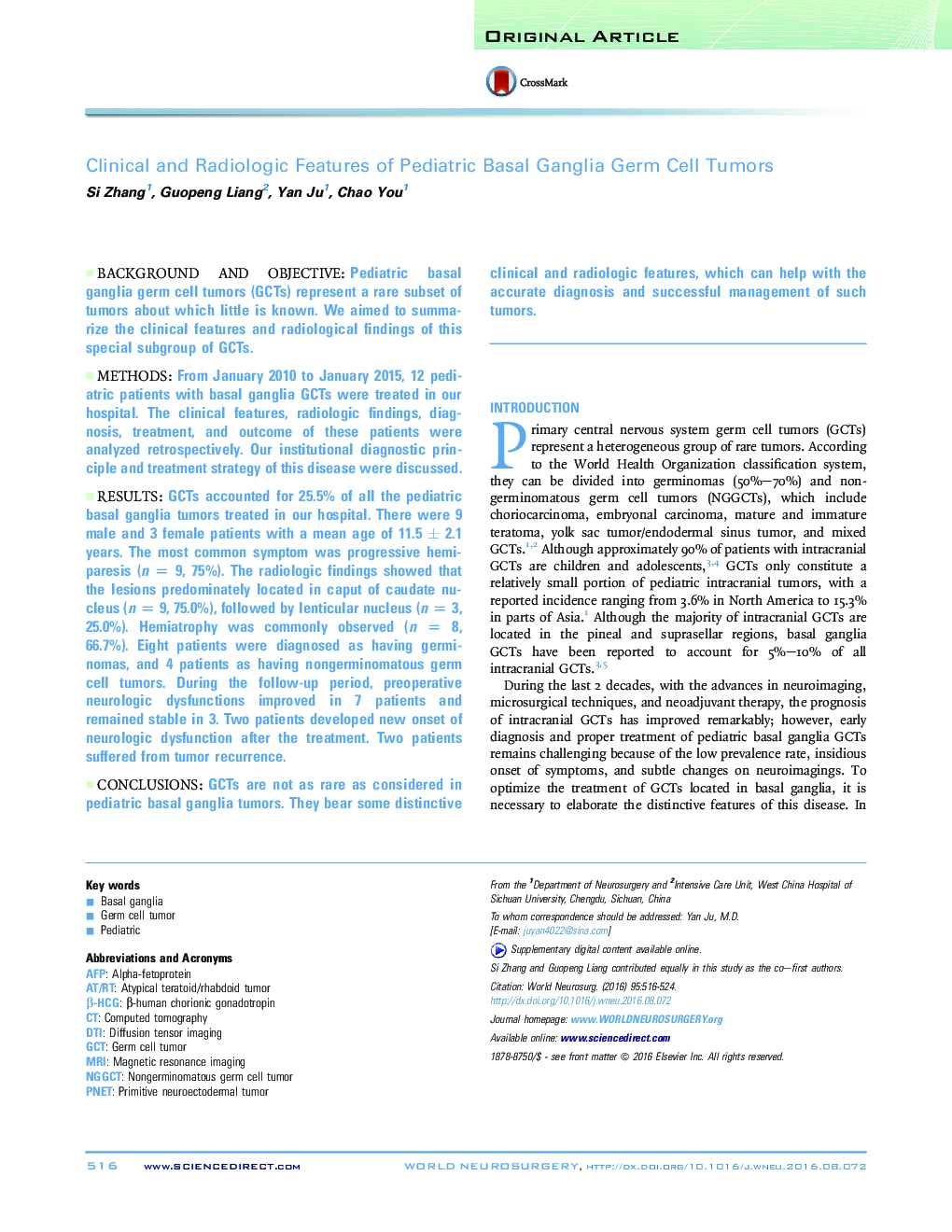| Article ID | Journal | Published Year | Pages | File Type |
|---|---|---|---|---|
| 6043102 | World Neurosurgery | 2016 | 10 Pages |
Background and ObjectivePediatric basal ganglia germ cell tumors (GCTs) represent a rare subset of tumors about which little is known. We aimed to summarize the clinical features and radiological findings of this special subgroup of GCTs.MethodsFrom January 2010 to January 2015, 12 pediatric patients with basal ganglia GCTs were treated in our hospital. The clinical features, radiologic findings, diagnosis, treatment, and outcome of these patients were analyzed retrospectively. Our institutional diagnostic principle and treatment strategy of this disease were discussed.ResultsGCTs accounted for 25.5% of all the pediatric basal ganglia tumors treated in our hospital. There were 9 male and 3 female patients with a mean age of 11.5 ± 2.1 years. The most common symptom was progressive hemiparesis (n = 9, 75%). The radiologic findings showed that the lesions predominately located in caput of caudate nucleus (n = 9, 75.0%), followed by lenticular nucleus (n = 3, 25.0%). Hemiatrophy was commonly observed (n = 8, 66.7%). Eight patients were diagnosed as having germinomas, and 4 patients as having nongerminomatous germ cell tumors. During the follow-up period, preoperative neurologic dysfunctions improved in 7 patients and remained stable in 3. Two patients developed new onset of neurologic dysfunction after the treatment. Two patients suffered from tumor recurrence.ConclusionsGCTs are not as rare as considered in pediatric basal ganglia tumors. They bear some distinctive clinical and radiologic features, which can help with the accurate diagnosis and successful management of such tumors.
